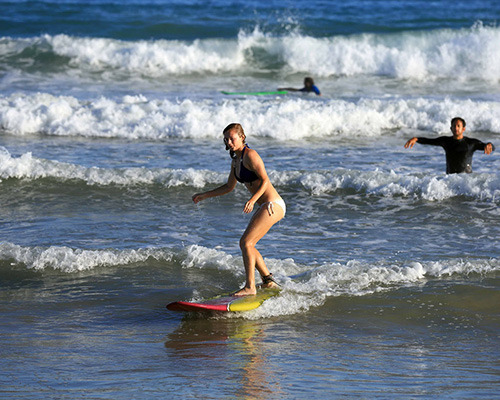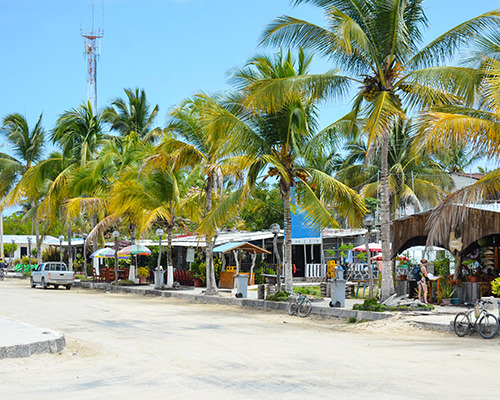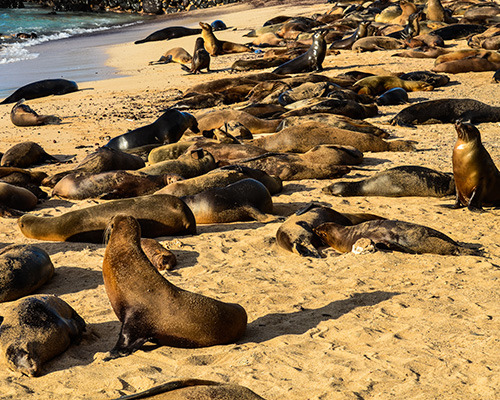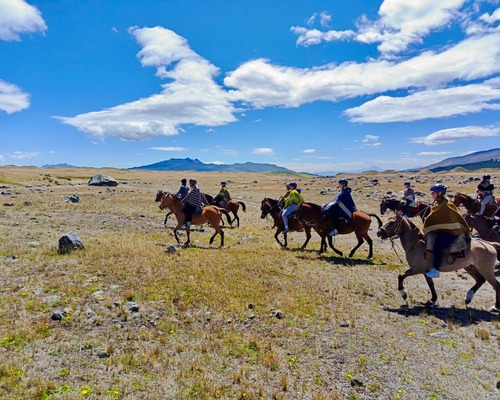6 Day Galapagos Itinerary
*This itinerary is completely customizable. Extra days and activities can be added or taken away. Service projects and 'classroom time' can be added at your discretion. This is simply a guide to help you envision the possibilities for your Exploration of the Galapagos Islands on a student / educational tour.
Lunch and Dinner Provided.
Landing on Baltra Island, a former US Air Force base during World War II, your Galapagos Adventure begins! It is a bit of a journey from Baltra Island to Puerto Ayora, requiring a bus, ferry and taxi. Keep your eyes open for potential giant tortoise sightings as you drive through the highlands.
Puerto Ayora, the biggest town in the Galapagos, has shops with supplies to stock up on things like sunscreen, hats or other necessities if you forgot to pack anything. After a nice lunch, you'll be able to check out a bit of the waterfront, looking for sea lions, as you get ready to take a boat to Isabela Island.
Taking 2-3 hours, the boat ride to Isabela can sometimes surprise us with whale or dolphin sightings! Upon arrival in Puerto Villamil, you'll notice right away this is a much smaller, quieter town than Puerto Ayora. Life on Isabela moves slow, just like the tortoises and iguanas!
Galapagos penguins, curious sea lions and spotted eagle rays are spotted in the bay here. Once you are checked in, your Galapagos Naturalist Guide will give you a bit of a walking tour of the town. You'll have some free time to explore before and after dinner.
Breakfast, Lunch and Dinner Provided.
Hiking time! Today is a very active day as we tackle one of the world's largest volcanic calderas - Sierra Negra volcano. The trek up to the rim of the crater takes us along some lush landscapes, where we may spot a wide range of vegetation and birdlife not commonly seen down near the coast and towns in the Galapagos.
Sierra Negra last erupted in 2005 and has shown high levels of activity as recently as 2018. Upon arrival at the crater you'll be able to see a huge, black lava field from past eruptions. Continuing on, the view gets more desolate as you circle around part of the rim and/or head towards Volcan Chico. Volcano vents, lava tubes and tunnels, hearty cactus plants and a strange moon-like landscape offers quite the contrast to the vegetation zones you first hiked through.
Stopping for a packed lunch before heading back to town, you'll encounter a number of Darwin's finches, see if you can figure out which species some of them are!
In the afternoon, you'll get an entirely different view of the Galapagos. Head towards the sheltered bay near town for a kayak or snorkel adventure. The activity will be partially dependent on tides. Kayaking here is mostly in very calm and clear water where you can spot sea lions, rays, fish, sea turtles, penguins and other animals swimming around you. Snorkeling is done in a similar area, but may get you close to some other interesting aqualife such as sea urchins, octopus or sea stars.
Finishing up wit ha bit of time before dinner, head to the beach to catch the sun setting off in the distance. If you're lucky, there may be a soccer match going on in town, where you cna take in the action, or perhaps challenge some Galapagos locals to a match.
Breakfast, Lunch and Dinner Provided.
Soak up some final sand andsay goodbye to Isabela as we head bak to Santa Cruz today in search of giant Galapagos tortoises.
After a morning boat ride, we'll head into the highlands to a private reserve where the most famous of Galapagos animals, the giant tortoise, roams free. Up here, in their natural environment, you can find tortoises cooling down in mud holes, "running" across fields, and just lazing about. Take a tortoise selfie and learn about the interesting history of these unique animals.
After a nice lunch, get geared up at the hotel for an afternoon adventure to Tortuga Bay or Las Grietas. At Tortuga Bay, there is an expansive white, sandy beach on one side, and a sheltered mangrove-lined cove on the other. It is a spot where marine iguanas and baby sharks may be seen! Over at Las Grietas, you can enjoy swimming in a special channel, with tall lava rock walls and super clear water.
Back to town for a local dinner this evening.
Breakfast, Lunch and Dinner Provided.
On the edge of town is the Charles Darwin Research Station, where we can find a variety of tortoise species, including babies and fully grown adults. It is about a 15-20 walk to get to the "route of the tortoises". There are a number of threats to giant tortoises in the islands, many of them introdcued, invasice species. Find out what is being done to help protect them and re-populate species that were decimated back in whaling days and by these various pest species.
Many Darwin Finches and even some land iguanas are also at this facility, as is the most famous of all Galapagos animals - Lonesome George. George died back in 2012 and was the very last of his species. This recent extinction hopefully serves as a wake up call to many people that we need to do more to protect our planet. "Taxidermy" George is now on display in a special temperature-controlled room.
After the research station we are off to our third, and final, island - San Cristobal.
Upon arrival at San Cristobal you may notice an abundance of sea lions! There are more sea lions accessible here than on any other island in the Galapagos! They often hang out on the boat docks, lava rocks and all the beaches in town.
After a lunch and short walk in town, we will head off to Tijeretas. Also called Frigatebird Hill, this is a hiking area beyond the educational Interpretation Center. Lava lizards, frigate birds and blue-footed boobies are most commonly spotted on this hike. If time permits, we can cool down with a swim in nearby Darwin Bay or Punta Carola. If lucky, you may have some curious sea lions join you in the water!
This is a great area to spend the afternoon, and we will begin to head back to the hotel before sunset.
Breakfast, Lunch and Dinner Provided.
Snorkel day!
Have your underwater cameras ready today, as we're xploring the underwater world of the Galapagos Islands. The Galapagos Marine Reserve, which surrounds the islands, is 133,000 square km in size, and protects a huge range of sealife. Today, we'll be on the lookout for schools of fish, as well as sea turtles and sharks!
At Isla Lobos, the snorkeling is done in a mostly protected wide channel. The often calm waters here allow for great visibility, where you can spot fish swimming by and animals hiding in the sandy bottom such as rays and octopus. A colony of sea lions lives here too, so chances of getting close to sea lions in the water are very high. Sea turtles like this area, and marine iguanas also feed in this area. It is an extremely beautiful spot that always surprises us.
The other potential snorkel spot today is Kicker Rock, also called Leon Dormido (Sleeping Lion). Off the coast, Kicker Rock can be seen from Puerto Baquerizo Moreno and presents a deep water snorkel experience. Cold currents and upwells here create the perfect environment for mega fauna of the sea such as hammerhead sharks, Galapagos sharks, white-tip reef sharks, sea turtles and spotted eagle rays. Booby birds nest on the rocks here as well. It is another one of our favorite snorkel spots in the Galapagos and quite different from Isla Lobos. While currents can be strong and swells can reduce visibility, on a clear day it is hard to beat!
The snorkel adventure takes up most of the day today, as you'll have a packed lunch on the boat. You'll also have time to visit a remote beach along the coast for a swim or beach walk before heading back to town.
Breakfast Provided.
Need some souvenirs to take home? This morning is your last chance to grab something from the Galapagos Islands. Coffee is the only locally-made product that is exported from the islands, and is a great gift for friends or family.
You also have the option to do a early morning paddle, for one final adventure in the Galapagos. Hop on a SUP or grab a kayak and head out into the bay outside of town. Your Galapagos Naturalist Guide will be happy to take you to some spots where sea lions are commonly encountered.
We'll help transport your bags to the airport this morning, which is only a five minute drive from town on San Cristobal. Enjoy the rest of your travels in Ecuador, or the journey home!

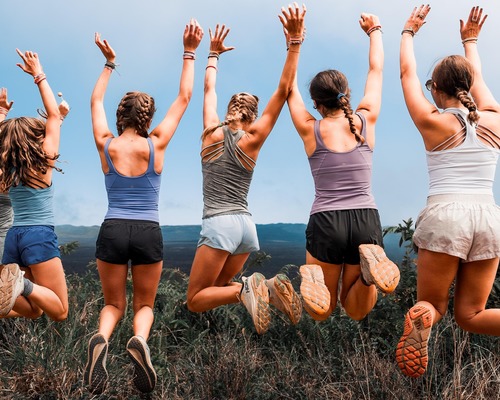
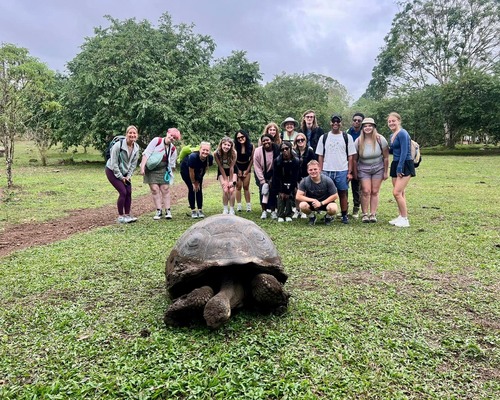
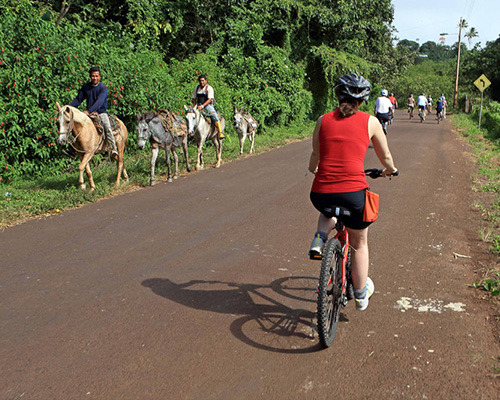

.jpg)
